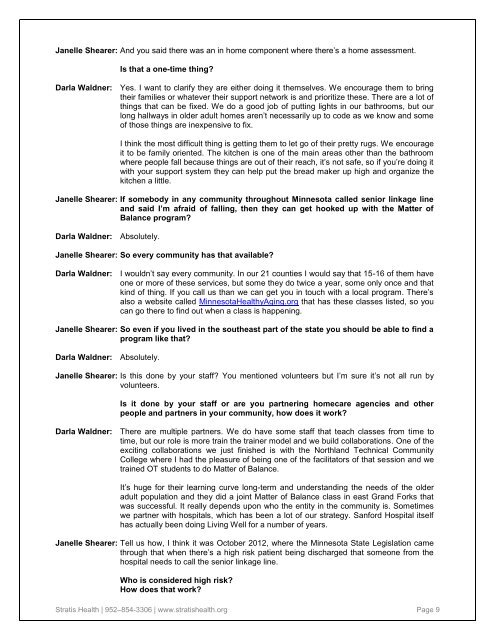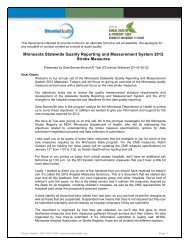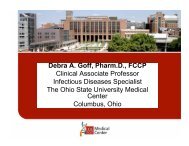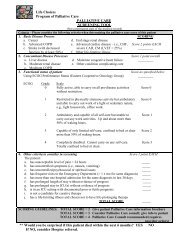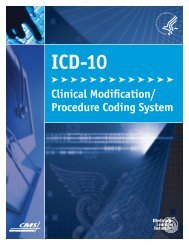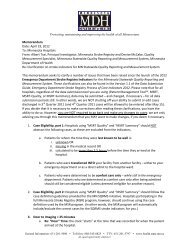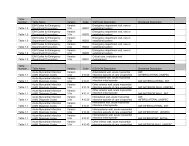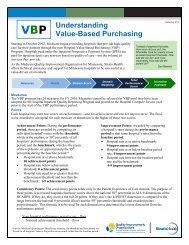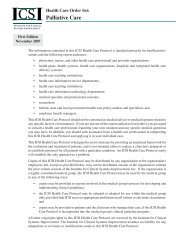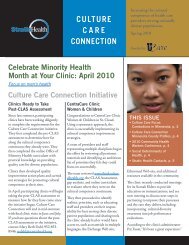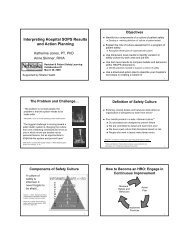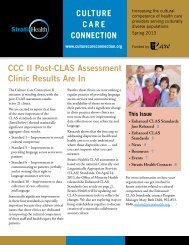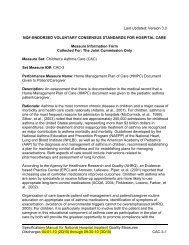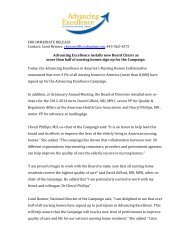Webinar Transcript Template - Stratis Health
Webinar Transcript Template - Stratis Health
Webinar Transcript Template - Stratis Health
You also want an ePaper? Increase the reach of your titles
YUMPU automatically turns print PDFs into web optimized ePapers that Google loves.
Janelle Shearer: And you said there was an in home component where there’s a home assessment.<br />
Is that a one-time thing?<br />
Darla Waldner: Yes. I want to clarify they are either doing it themselves. We encourage them to bring<br />
their families or whatever their support network is and prioritize these. There are a lot of<br />
things that can be fixed. We do a good job of putting lights in our bathrooms, but our<br />
long hallways in older adult homes aren’t necessarily up to code as we know and some<br />
of those things are inexpensive to fix.<br />
I think the most difficult thing is getting them to let go of their pretty rugs. We encourage<br />
it to be family oriented. The kitchen is one of the main areas other than the bathroom<br />
where people fall because things are out of their reach, it’s not safe, so if you’re doing it<br />
with your support system they can help put the bread maker up high and organize the<br />
kitchen a little.<br />
Janelle Shearer: If somebody in any community throughout Minnesota called senior linkage line<br />
and said I’m afraid of falling, then they can get hooked up with the Matter of<br />
Balance program?<br />
Darla Waldner: Absolutely.<br />
Janelle Shearer: So every community has that available?<br />
Darla Waldner: I wouldn’t say every community. In our 21 counties I would say that 15-16 of them have<br />
one or more of these services, but some they do twice a year, some only once and that<br />
kind of thing. If you call us than we can get you in touch with a local program. There’s<br />
also a website called Minnesota<strong>Health</strong>yAging.org that has these classes listed, so you<br />
can go there to find out when a class is happening.<br />
Janelle Shearer: So even if you lived in the southeast part of the state you should be able to find a<br />
program like that?<br />
Darla Waldner: Absolutely.<br />
Janelle Shearer: Is this done by your staff? You mentioned volunteers but I’m sure it’s not all run by<br />
volunteers.<br />
Is it done by your staff or are you partnering homecare agencies and other<br />
people and partners in your community, how does it work?<br />
Darla Waldner: There are multiple partners. We do have some staff that teach classes from time to<br />
time, but our role is more train the trainer model and we build collaborations. One of the<br />
exciting collaborations we just finished is with the Northland Technical Community<br />
College where I had the pleasure of being one of the facilitators of that session and we<br />
trained OT students to do Matter of Balance.<br />
It’s huge for their learning curve long-term and understanding the needs of the older<br />
adult population and they did a joint Matter of Balance class in east Grand Forks that<br />
was successful. It really depends upon who the entity in the community is. Sometimes<br />
we partner with hospitals, which has been a lot of our strategy. Sanford Hospital itself<br />
has actually been doing Living Well for a number of years.<br />
Janelle Shearer: Tell us how, I think it was October 2012, where the Minnesota State Legislation came<br />
through that when there’s a high risk patient being discharged that someone from the<br />
hospital needs to call the senior linkage line.<br />
Who is considered high risk?<br />
How does that work?<br />
<strong>Stratis</strong> <strong>Health</strong> | 952–854-3306 | www.stratishealth.org Page 9


